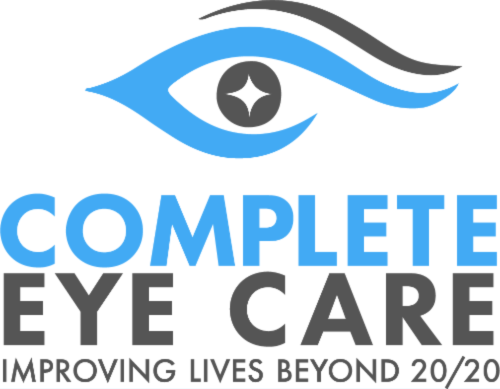Coordinating Body Pairs
Bilateral coordination refers to the ability to coordinate both sides of the body at the same time in a controlled and organized manner; for example, stabilizing paper with one hand while writing/cutting with the other. One needs to have bilateral coordination in all parts of one’s body, such as your legs for walking or your eyes for seeing, but when talking about fine motor skills, we focus more on the bilateral upper extremity, or both arms, hands and trunk working together in a coordinated way. Good bilateral integration/coordination is an indicator that both sides of the brain are communicating effectively and sharing information. Children who have difficulty coordinating both sides of their body can have difficulty completing daily living tasks (dressing, tying shoes), fine motor activities (banging blocks together, stringing beads, buttoning), visual motor tasks (drawing, writing, cutting, catching/throwing), and gross motor activities (crawling, walking, climbing stairs, riding a bike).
Crossing Over
“Crossing the midline” is an integral skill related to bilateral coordination. Crossing the midline refers to the ability to spontaneously cross over the midline of the body during motor completion/functional tasks – moving one hand, foot, or eye into the space of the other hand, foot, or eye (i.e. sitting with legs crossed, scratching the opposite elbow, successfully intersecting lines to draw a cross – without switching hands, reading left to right). Babies and toddlers may use both hands equally and initiate picking up or interacting with an object with whichever hand is closer (i.e. if the item is on the left side of the table he will likely use the left hand, if it the object is on the right side, he will likely use the right hand). However, by 3 to 4 years of age a child should have mastered the skill of crossing midline. Establishing hand dominance (a worker hand and a helper hand) is an indicator that the brain is maturing and lateralization is occurring. This is strongly correlated with the ability to cross midline. The child who avoids midline crossing can have difficulty coordinating both sides of the body, often has difficulty establishing hand dominance, and tends to alternate hand use when coloring, writing, eating, throwing, etc.
Successful reading depends on an ability to cross the midline. When reading, a child’s eyes must follow along the entire horizontal length of the page before moving to the next line. Without well-developed bilateral integration, a child will likely read the first few words on a page and then pause. After thinking for a moment, he may continue to read the second half of the page. This pause is because the child was unable to instinctively cross the midline so he needed to pause to deliberately move his eyes to the next word to resume reading.
Body Awareness
Another important foundation in the development of bilateral coordination is body awareness. Body awareness refers to the ability to know and visualize where your body is in space without having to look at it (i.e. how high to lift your leg when climbing stairs). A key concept surrounding body awareness is proprioception, which is feedback from muscle and joint sensations. Children who do not have adequate body awareness may appear a bit clumsy, be cautious with movement, or fearful of their feet leaving the ground (tossing in air, swinging, etc.), or avoid or engage in too rough of play (wrestling, crashing, carrying/pushing/pulling heavy objects). Subsequently, children who do not have a good sense of where their body is in space can present with difficulty in being present since they are preoccupied with seeking or avoiding stimulation. They also have difficulty coordinating both sides of their body to complete bilateral tasks (i.e. putting on socks and shoes, throwing/catching a large ball with two hands).
Activities for developing bilateral coordination:
- Bopping a balloon back and forth or popping bubbles with both hands.
- Playing catch to encourage coordinating both hands.
- Playing with toy instruments: banging drums, triangle, symbols.
- Pinching, pulling, squeezing play dough, as well as, using cutting and design tools.
- Stringing uncooked pasta on yarn or beads on pipe cleaners/string.
- Snipping/cutting with scissors- yarn, string licorice, play dough, construction paper, coupons.
- Lacing activities – lace string/yarn through pre-punched holes.
- Mr. Potato Head.
- Frosting cookies with a butter knife, spreading peanut butter on crackers/toast.
Activities for Developing Body Awareness:
- Playing the Hokey Pokey or Simon Says
- Climbing on the playground: up the slide (both the ladder and the incline), up/down stairs, on/off equipment
- Obstacle courses
- Playing on dynamic (moving) equipment- small trampoline, balance board, swings.
- Pushing/pulling weighted objects: medicine balls, weighted carts, carrying grocery bags, laundry basket, taking out the trash.
- Sports/athletics: gymnastics, karate, yoga, wrestling, soccer, basketball, baseball.
- Swimming
- Wheelbarrow walking, animal walking (bear walk, crab walk, snake crawl)
- Playing Twister
Sources:
What is bilateral coordination and why is it important?, childsplaytherapycenter.com,
https://www.childsplaytherapycenter.com/bilateral-coordination-important/, Aug 2014. Accessed May 2016.
Gross Motor Development, schoolsparks.com,
Bilateral Integration, therapyfunzone.net,
http://therapyfunzone.net/blog/ot/fine-motor-skills/bilateral-integration/, 2016. Accessed May 2016.
